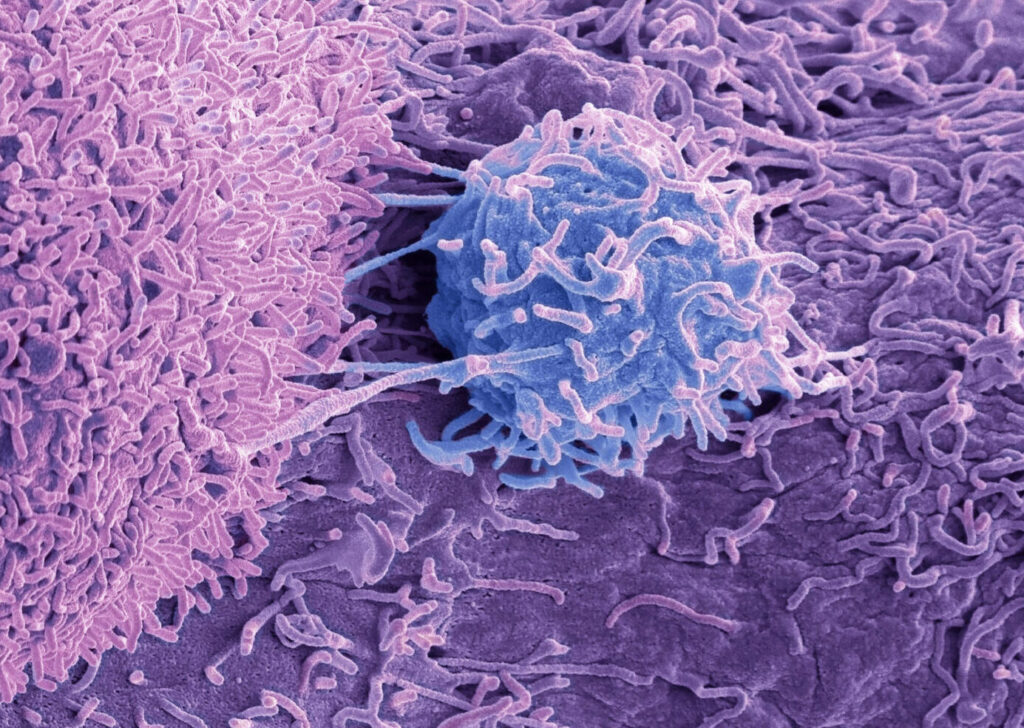An international study led by scientists at Flinders University and at South China University of Technology has uncovered a new vulnerability in prostate cancer cells that could help improve treatment for one of the most common cancers affecting men. The preclinical in vitro and in vivo study found that two protein disulfide isomerase (PDI) enzymes—PDIA1 and PDIA5—are involved in androgen receptor (AR) regulation, and play a crucial role in helping prostate cancer cells grow, survive, and resist treatment. The studies further showed that combining inhibitors of these enzymes with enzalutamide, a widely used prostate cancer therapy, significantly boosted treatment effectiveness.
Professor Jianling Xie, PhD, who started the research whilst at Flinders University, reported that the combination therapy worked well in patient-derived tumor samples and in mice, suggesting strong potential for future clinical trials. “This is an exciting step forward,” said Xie, now at South China University of Technology. “Our findings show that PDIA1 and PDIA5 are not just helpers of cancer growth but they’re also promising targets for new treatments that could work alongside existing drugs.”
Professor Luke Selth, PhD, head of Prostate Cancer Research and co-director of Flinders Health and Medical Research Institute’s Cancer Impact program, stated, “We’ve discovered a previously unknown mechanism that prostate cancer cells use to protect the androgen receptor, which is a key driver of the disease. By targeting these enzymes, we can destabilize the AR and make tumors more vulnerable to existing therapies like enzalutamide.”
![Lead author Professor Jianling Xie. [Flinders University]](https://www.genengnews.com/wp-content/uploads/2025/10/Low-Res_Professor-Jianling-Xie-300x200.jpg)
Senior author Selth, together with first author Xie, and colleagues, described their findings in a paper in PNAS, titled “Protein disulfide isomerases regulate androgen receptor stability and promote prostate cancer cell growth and survival,” in which the researchers concluded, “This work positions PDIA1/PDIA5 as viable therapeutic targets … Our study provides evidence that targeting PDIAs has the potential to augment prostate cancer cell response to enzalutamide, a commonly used AR inhibitor.”
Prostate cancer is the second most common cancer in men worldwide and is “driven by abnormal activity of the androgen receptor (AR), which is stimulated by male sex hormones, androgens,” the authors explained. “As such, advanced prostate cancers are treated with drugs that block activity of this pathway, such as androgen deprivation therapy (ADT) and AR antagonists.” Although these treatments have helped many patients, resistance is a major challenge, resulting in castration-resistant prostate cancer (CRPC), which is a leading cause of death. “Understanding how cells develop resistance to AR-targeted therapies and developing novel therapies for CRPC are urgent imperatives,” the investigators stated.
![Professor Luke Selth, Flinders Health and Medical Research Institute (FHMRI) and College of Medicine and Public Health, Flinders University. [Professor Luke Selth, Flinders Health and Medical Research Institute (FHMRI) and College of Medicine and Public Health, Flinders University.]](https://www.genengnews.com/wp-content/uploads/2025/10/Low-Res_Luke-Selth-300x210.jpg)
Working in cell lines and in prostate cancer bearing mice, the team’s results demonstrated that “ … PDIA1 and PDIA5 play an important role in prostate cancer cell growth and survival.” The studies showed that the enzymes act as molecular bodyguards for the androgen receptor (AR), a protein that fuels prostate cancer. When PDIA1 and PDIA5 are blocked, the AR becomes unstable and breaks down, leading to cancer cell death and tumor shrinkage in both lab-grown cells and animal models.
Importantly, they found that combining PDI inhibitors with the AR-targeting drug enzalutamide boosted antitumor responses. “… PDIA1/5 inhibition elicited anticancer effects and sensitized tumors to standard-of-care AR-targeted therapy, highlighting the potential translational significance of these findings,” they stated.
The work further showed that the roles of these enzymes goes beyond protecting the AR, with the finding that PDIA1 and PDIA5 also help cancer cells manage stress and maintain energy production. Blocking them causes damage to the cells’ mitochondria and leads to oxidative stress, which further weakens the cancer. “Beyond their impact on AR, we found that PDIA1/5 play critical roles in maintaining redox homeostasis and mitochondrial function,” the authors noted. “Our research demonstrated that these enzymes have a multifaceted role in prostate cancer: they protect cells from oxidative stress, maintain mitochondrial function, and have important functions as regulators of androgen receptor (AR), a critical oncogenic driver,” Xie pointed out, “This dual impact of hitting both the AR and the cancer’s energy supply makes these enzymes especially attractive targets. It’s like cutting off both the fuel and the engine at the same time.”
In their paper the team wrote, “In conclusion, this study identifies PDIA/5 as factors with multifaceted roles in prostate cancer, promoting AR protein stability and activity, sustaining oncogenic redox homeostasis and facilitating mitochondrial oxidative phosphorylation. The emergence of PDI inhibitors and the potential for such compounds to augment the activity of AR-targeted therapies warrants further investigation.”
Professor Selth noted that while current drugs that block PDIA1 and PDIA5 show promise, more work is needed to make them safe and effective for use in patients. Some of the existing compounds may affect healthy cells, so future studies will focus on developing safer inhibitors.




